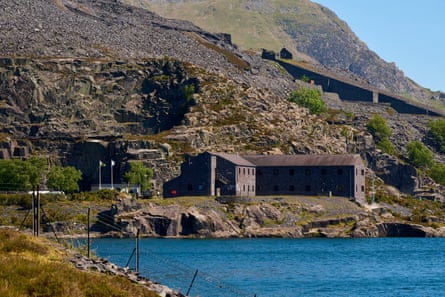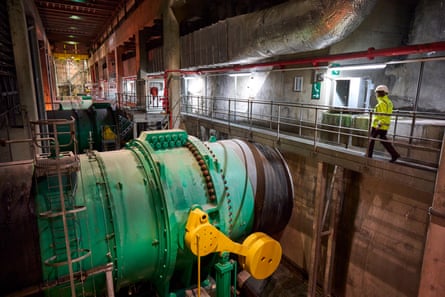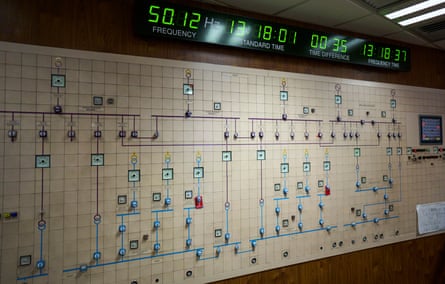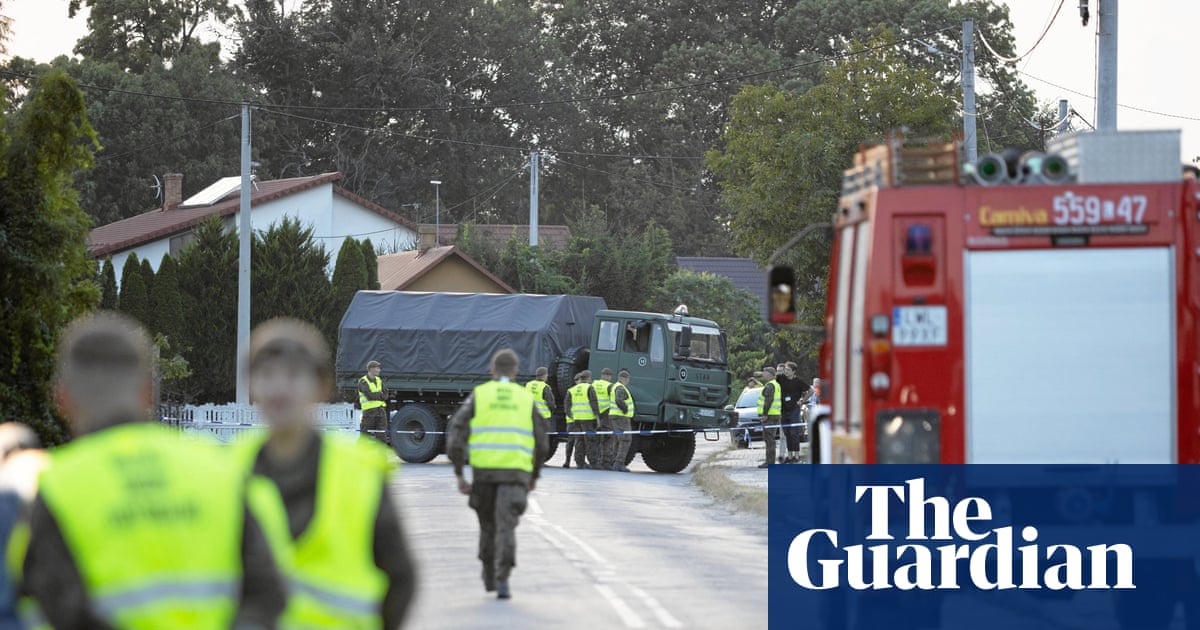Seconds after a catastrophic series of power outages struck across the UK in the summer of 2019, a phone rang in the control room of the Dinorwig hydropower plant in north Wales. It was Britain’s energy system operator requesting an immediate deluge of electricity to help prevent a wide-scale blackout crippling Britain’s power grids.
The response was swift, and in the end just under million people were left without power for less than 45 minutes. While trains were stuck on lines for hours and hospitals had to revert to backup generators, that phone call prevented Britain’s worst blackout in a decade from being far more severe.
Almost six years later, the owners of Dinorwig, and its sister plant at Ffestiniog on the boundary of Eryri national park, formerly Snowdonia, are preparing to pump up to £1bn into a 10-year refurbishment of the hydropower plants that have quietly helped to keep the lights on for decades.
Ffestiniog was one of the first pumped hydroelectric systems in the UK when it opened in 1963, while nearby Dinorwig – the largest and fastest-acting pumped storage station in Europe – followed in 1984. The refurbishment could mean the plants continue to provide reliable clean energy on demand for decades to come – and serve as giant grid batteries to store Britain’s renewable electricity for when it is needed most.
Miya Paolucci, the UK boss of the French energy company Engie, one of Dinorwig’s owners, said refurbishing the plant will cost a third of the investment needed to build a new hydropower plant on a similar scale, making the overhaul an “intuitive” decision to secure another 25 years of life from the “much-loved” power station.

Britain has used gravity and the flow of water to generate electricity since 1878, when a hydroelectric generator first powered an arc lamp at the Cragside manor house in Northumberland. The project involved dropping water 100 metres vertically to turn a Siemens generator that would go on to power a series of newly invented incandescent lightbulbs in the country house.
Dinorwig and Ffestiniog use the same principles as the Cragside manor house to generate enough electricity to power the equivalent of almost 2 million UK households in a matter of seconds. When power is plentiful, the plants use electricity to pump water from a lower reservoir up to an elevated dam. Later, when power supplies are tight, the water is released to drive the turbines, generating power.
Dinorwig or Mynydd Gwefru, as it is known locally, can be called upon to generate electricity within 75 seconds by releasing 86,000 gallons of water a second down a cavernous 500-metre vertical tunnel. The water crashes into six turbines, each weighing about 500 tonnes, which generate high-volume blasts of renewable power on demand.
Overall, hydropower makes up only 2% of the UK’s total electricity – but often at times when its electrons are at their most vital to keeping the lights on. It provides many of the key benefits of large fossil fuel power plants – but without the carbon emissions.
Unlike wind and solar farms, hydropower projects can be called upon by the system operator at specific times when the grid needs more generation to meet demand. The spinning mass of its generators can also help to stabilise the frequency of the power grid at about 50Hz, the level required to avoid power outages. In the event of a blackout, hydropower can even help to restart the power system.

But after 140 years generating electricity it is hydropower’s potential as an energy storage technology that is key to its future. Pumped hydropower can effectively work as a long-duration battery by using renewable electricity when it is abundant to pump water up into a reservoir and release the water to generate electricity when renewable energy wanes.
Unlike grid batteries, which are often designed to charge during the day and discharge electricity at night, long-duration energy storage systems can store energy for hours, days or even weeks so it can be used when needed.
The government hopes to bring forward investment in 18GW of storage by 2035, of which 10GW should be long-duration storage such as hydropower. But pumped hydropower projects are struggling to find a place in Britain’s energy landscape

There are geographic hurdles: there are only so many vast mountains and brimming reservoirs, and the projects can also provoke concerns within the local community. But in locations where they are viable developers have been left to wait for government officials to confirm the details of its financial support framework.
One of the UK’s biggest renewable energy developers, SSE, hopes that its Coire Glas project in the Scottish Highlands could be the first major pumped storage hydro scheme built in the UK in more than 40 years.
The project could power 3 million homes for up to 24 hours, and would nearly double Great Britain’s total current electricity storage capacity, but it needs the final details of a government support scheme before SSE can fully commit to the project.

A House of Lords report published late last year warned that a large-scale rollout of long-duration energy storage technologies was “not being treated with sufficient urgency”.
The report found that a wide-scale rollout would allow more renewable power to be available, potentially lowering the overall cost of electricity for consumers.
Better energy storage could, the committee said, make the grid more flexible and avoid paying to switch off wind and solar farms when there is more clean power being generated than consumers can use.
Paolucci said: “Flexible storage is essential for net zero carbon operation of Britain’s electricity system. It helps balance the system by ensuring there’s always a large volume of ‘back-up’ power on standby, that can be delivered in very fast timescales if required. We’re very proud to contribute to the electricity security of supply and green energy ambition of the UK with these extraordinary assets.”

 3 months ago
58
3 months ago
58

















































